Inside Russia’s secretive cult of Tsar worship: How royalism is thriving 100 years after murder of Nicholas II
Thousands of Russians arrive every year to pay homage at the grisly scene in western Siberia where the Romanov dynasty was wiped out in 1918. But when you scratch beneath the surface of this seemingly benign historical site, things get very strange indeed
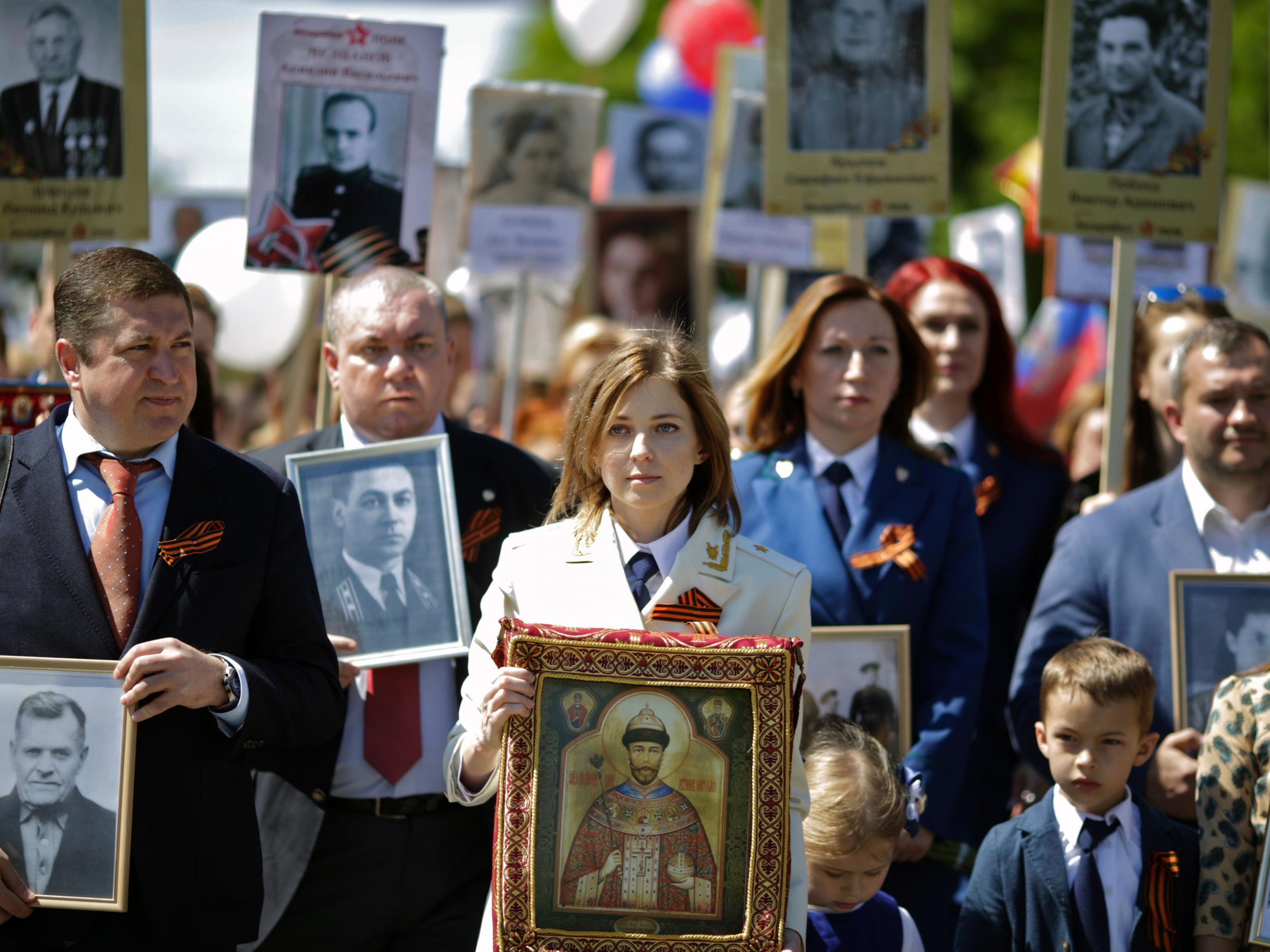
The gunshots began soon after midnight on 17 July, 1918. Chaotically, the firing squad executed Tsar Nicholas II, his 13-year-old son Alexei, daughters Maria, Anastasia, Olga and Tatiana, wife Alexandra and their attendants in the cellar of a merchant house in Yekaterinburg, western Siberia.
Then they set about destroying the evidence.
The bodies were removed – first by truck, and then by horse and cart, to a deep pit called Ganina Yama 25km away. There, the Bolsheviks tipped the bodies in, and began to dissolve the bodies in acid.
The Ganina Yama pit has today been converted into a monastery complex. It is a religious Disneyland, with shrines, shops and cafes, and a multitude of icons in honour of the tsar. Inside, excited guides talk of the tsar’s “ultimate, redemptive sacrifice”, and point to the now sanctified pit, where, elderly, sickly-looking women are muttering prayers.
“Forgive us, saintly passion-bearer, Tsar-Martyr Nicholas,” they say.
The pilgrims are certain they have arrived at the final resting spot of their hero. Except they haven’t. It turns out, the Bolsheviks hadn’t brought enough acid to destroy the bodies completely. So when local villagers began to ask awkward questions, the soldiers retrieved the bodies and desperately looked for another place to bury their crime.
The Bolsheviks eventually decided on a field called Porosenkov Log in the Koptyaki forest, approximately 4km away.
With the Communist Party unkeen to advertise the nature of the family’s death, the bodies would remain at Porosenkov Log, untouched for the next sixty years. In 1978, an Interior Ministry filmmaker called Geli Ryabov began a new search. No one knows why he started; perhaps he’d been tipped off about the diamond-studded corset the Tsarina had been wearing. Or why, when a year later he sought an urgent audience with Leonid Brezhnev in Moscow to show the bones and bullet ridden-skulls, he was turned down.

Regardless, the bodies were reburied in Yekaterinburg, and it would only be when the Soviet Union fell that the full story was made public. Even then, the remains of only nine bodies were recovered. The other two bodies, children Maria and Alexei, were found sixteen years later, in 2007, in a separate grave about 20 metres away. Today, simple crosses mark the burial sites in Porosenkov Log, in stark contrast to the glitz at Ganina Yama. When The Independent visited the memorial, the only person in sight was a man walking his dog.
Every year, on the anniversary of the killings, a nocturnal pilgrimage from Yekaterinburg passes 50 or so metres past the memorial. This year, as with every previous year, none of the pilgrims turned in, and instead carried onwards, towards Ganina Yama.
Nikolai Neuimin was part of the 2007 research group that put the final pieces of the burial mystery together. The imposing, bearded academic today heads the Romanov history department in the local Sverdlovsk Regional History Museum.
His modest exhibition shows the surviving artefacts: the original testimonies, the pistols, and the iron bars of the cellar window, recovered from the now-destroyed merchant house. One of the exhibits is the very first report into the killing, the 1919 commission by the monarchist investigator Nikolai Sokolov. Mr Sokolov’s claims to have recovered the remains in Ganina Yama have since been contradicted by four separate genetic analyses.
Mr Neuimin calls the Sokolov report “the writings of a madman”. The only real evidence the investigator offered, he says, were bones, and these were later proven not to be of human origin.
Incredibly, the report remains the basis for the official position of the Orthodox Church, which refuses to accept the bodies are anywhere but Ganina Yama.
In 1998, the remains of the first nine bodies were reburied in a grand ceremony in St Petersburg. The Orthodox leadership stayed away from the funeral, but two years later, the church canonised Nicholas II and his family.
When the remains of the final two bodies were found in 2007, Orthodox authorities refused to accept them: they were saints, after all. In the confusion, the Russian State Archives stepped forward, and, by quirk of fate, the remains of Alexei and Maria, the Tsar’s now saintly children, ended up in the same drawer as the skull and gold-toothed jawbone of Adolf Hitler.
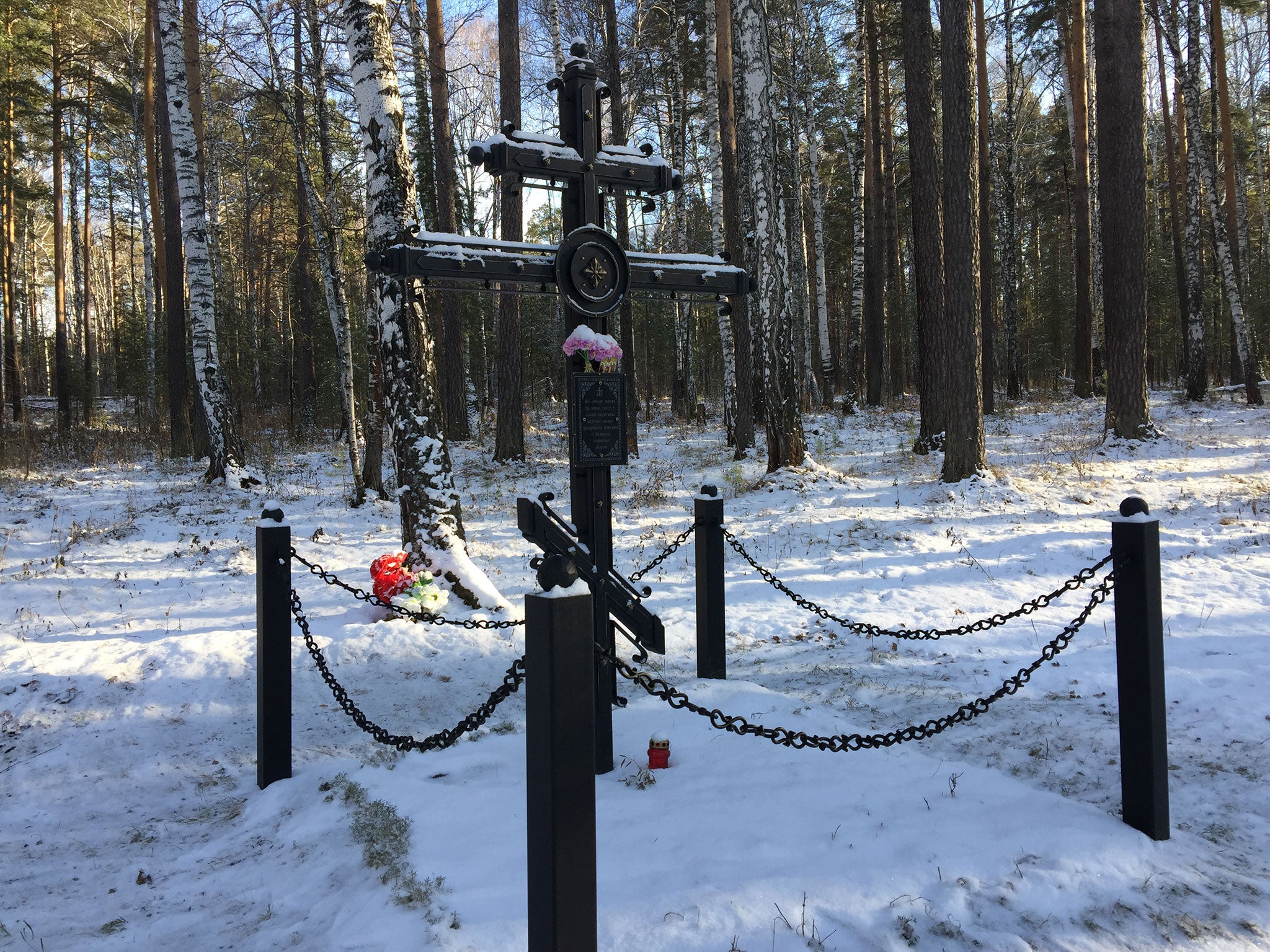
The Church’s inflexible position has given rise to a culture of ignorance and hysteria around the Romanovs, says the historian. And at its extremes is a movement that has come to be known as tsarebozhniki or Russia’s “tsar worshippers”, who go one step further to sanctify everything the tsar did.
The tsar-worshipper ideology is simple as it is attractive: the supposedly peace-loving Nicholas II sacrificed himself and his family to atone for the sins of the entire Russian nation. But it is the “Wahhabism of the Orthodox faith”, says Mr Neuimin – a fantasy that has given birth to any number of other historical untruths.
Appearing at the end of the 1990s, Russia’s tsar worshippers were initially a cranky group that few paid attention to. But earlier this year, the radical edge of the movement showed its teeth. The trigger was a new film, depicting – at times, erotically – the true story of a love affair between Nicholas and a young ballerina, Matilda Kshesinskaya. The director of the “blasphemous” film, Alexei Uchitel, was targeted in two separate arson attacks.
Yekaterinburg saw its fair share of Matilda protests, and one especially violent turn. In early September, a 39-year-old man rammed a truck loaded with gas canisters into the city’s Cosmos cinema, which had been scheduled to screen the film. The attack didn’t quite work out as planned, however, and the suspect was forced to present himself at hospital with serious burns.
Here, he admitted to investigators that he had spent the previous day receiving divine instruction in the Temple on the Blood, the church overlooking the cinema.

The Temple on the Blood is no accidental place of worship. It is built on the grounds of the old Ipatiev merchant house, the site of the Romanovs’ execution – or rather 20m away, since architects thought that spot more impressive. Today, it is no less than a shrine to Nicholas II. Filled with icons and paintings of the Romanovs, it contains a replica cellar, and an extensive exhibition exalting the peace-loving, saintly nature of the tsar redeemer. A simple cross marking the actual location of the merchant house is, naturally, ignored by parishioners.
The temple has served as a regular backdrop for protests against the film. One of the leaders of the pickets, a former boxer called Sergei Aliyev, even directed his own documentary response to the film, called The Lies of Matilda. Through a series of monologues with “experts”, the film claims to prove an anti-Russian conspiracy to undermine the tsar.
Timeline
(all new calendar)
March 8, 1917: Revolution begins with food protests
March 15, 1917: Tsar Nicholas abdicates
March 22, 1917: Nicholas II and family placed under house arrest by provisional government in Tsarkoye Selo, St Petersburg
August 1917: Romanovs evacuated to Tobolsk, western Siberia, supposedly to protect from revolution
November 7, 1917: Bolsheviks seize power, civil war begins
April 1918: Romanovs moved from Tobolsk to Yekaterinburg, where they are secretly imprisoned in Ipatiev House, an old merchant house
June 13, 1918: Grand Duke Michael, the younger brother of Nicholas II, shot in Siberian forest
June 14, 1918: The tsar’s sister-in-law Elizabeth, cousin Sergei and nephews Ivan, Constantine, Vladimir and Igor thrown into mine shaft in Alapayevsk, near Yekaterinburg. Autopsies suggest some might have initially survived
July 17, 1918: Tsar Nicholas II, wife Tsarina Alexandra and five children Olga, Tatiana, Maria, Anastasia and Alexei executed along with attendants in Yekaterinburg
July 25, 1918: Yekaterinburg falls to the White Army
1919: Sokolov Commission established to investigate the murders. His report is published in French in 1924
1979: Burial site discovered by filmmaker Geli Ryabov and local geologist Alexander Avdonin
1989: At height of Perestroika, Geli Ryabov reveals secret of burial site to The Moscow News
1991: Remains of nine bodies exhumed at Porosenkov Log field
1998: Nine coffins reburied in Peter and Paul Cathedral in St Petersburg. Leadership of Russian Orthodox Church stays away, disputing remains
2000: Imperial Family of Russia elevated to sainthood by the Orthodox Church
2007: Remains of children Alexei and Maria found in Porosenkov Log. Church does not accept them and they are transferred to the Russian State Archives
2008: Russian prosecutor general’s office officially rehabilitates Romanov family, who are declared ‘victims of political repressions’
When we speak, Mr Aliyev asks if The Independent is a “moral publication”. The media has “subordinated itself to the masons of the United States and Europe”, he reasons. As a former analytics officer of Yekaterinburg’s police force, he says he knows what he was talking about.
Mr Aliyev’s problem with the film is basic. “Just imagine someone makes a film showing your mother as a prostitute and your father a German gay-porn actor,” he says. “Go inside the church, look at the lord tsar’s blue eyes and you’ll see how moral he is.”
The Temple on the Blood is, in fact, one of two local congregations most commonly associated with the city’s tsar worshippers. The other seat of the movement is the Sredneuralsk women’s monastery, located on the edge of town near the Ganina Yama complex.
The Sredneuralsk monastery boasts one of the largest followings of any in Russia. Every week, hundreds of pilgrims come here, all seeking the healing guidance of its secretive 62-year-old leader; a priest going by the name of Father Sergei.
In real life, Father Sergei is Nikolai Romanov – he changed his name to match the tsar, of course. He has a colourful past. A former policeman, he has several criminal convictions, and has spent 13 years in a prison colony – the documents say for murder, though his supporters dispute this.
After being released at the end of the 1990s, Father Sergei claims to have traversed the 140km from the Nizhny Tagil colony to Yekaterinburg on foot, wondering deep thoughts about his future.
From there, the biography becomes hazy. Little is known about how Father Sergei got to know church leaders, how he rose so remarkably fast in the hierarchy, or how, in 2002, he came to be the man who built the Ganina Yama complex. Some say he is the spiritual confessor to Timur Sverdlovsky, the nephew of “Grandpa Hassan”, linchpin of Russia’s criminal underworld until his untimely death in 2013.
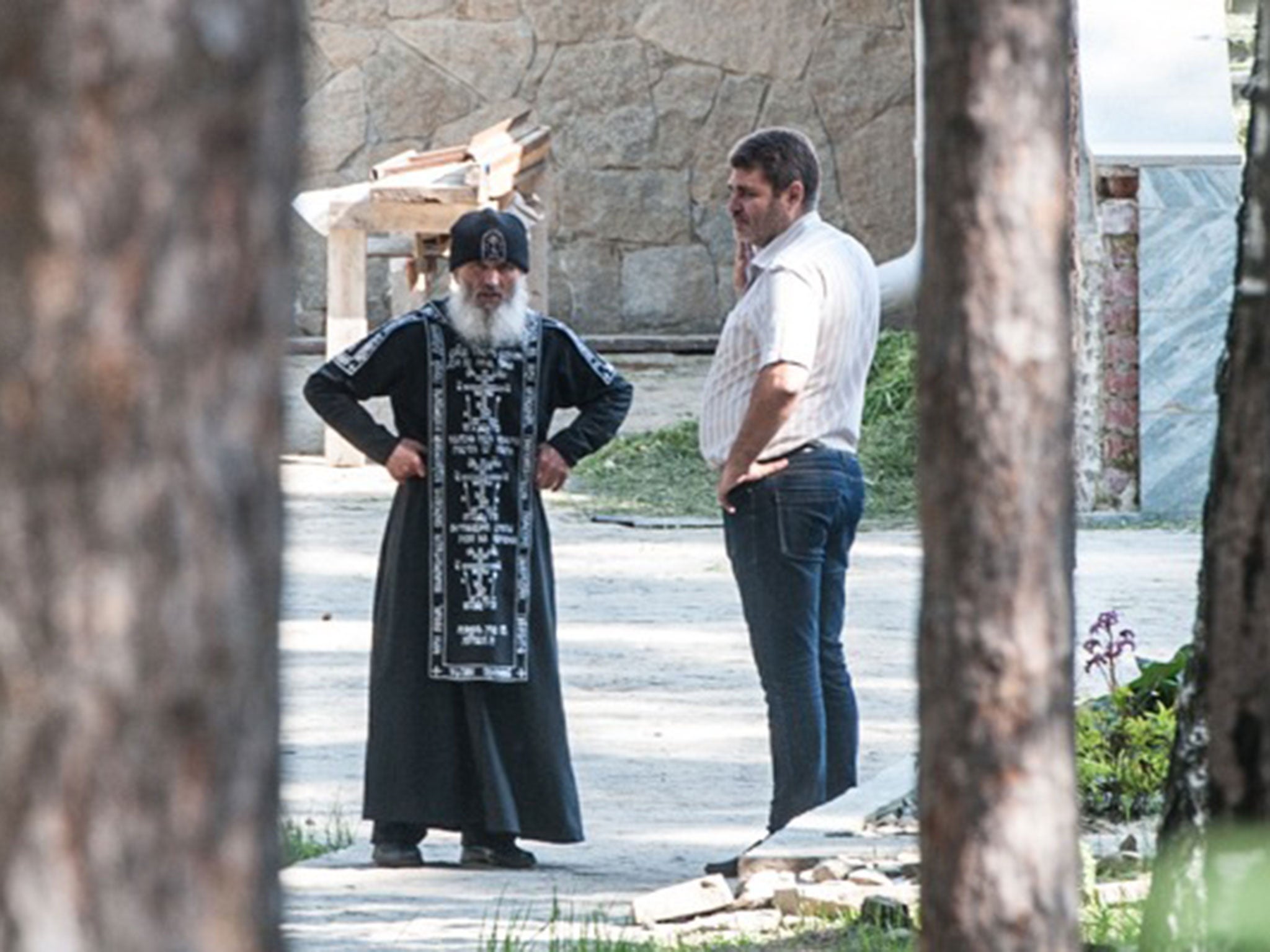
What isn’t disputed is his role as confessor to the prominent Russian politician and former Crimean attorney general Natalya Poklonskaya.
Ms Poklonskaya, who married in the monastery, has played a leading role in the radical religious reaction against Matilda. She has also frequently appeared alongside Father Sergei, including when the priest made a televised trip to Crimea in July 2014, three months after the disputed annexation.
Set inside woodlands, the Sredneuralsk monastery is by now a well-developed set of living quarters and temples. There are three active temples – one, naturally with a cellar room in homage to the Romanovs – and a huge, brick temple with golden domes that is currently under construction. There are JCBs, heavy machinery and a fatigued Kamaz army truck at the entrance. A graveyard extends down into the birch forest.
Fifteen years ago, things were very different. The only residents in the area were farmers Sergei Krekov and his wife Daniya Suleimenova, who set up a small farmstead in 1989, alongside the site of the future monastery. Speaking with The Independent in Moscow, Ms Suleimenova says the family were never rich, and the post-Soviet 1990s were hard. But they produced enough eggs, meat and milk to sell locally and scrape a living.
The farmers’ world changed on 3 June 2002, the day when Father Sergei and future monastery managers arrived on the territory. First, they noticed subtle changes; the locks on the main gates had been switched. By evening, they were under little doubt about the strange future that lay ahead. Washing up after dinner, Ms Sulemeinova looked up from the sink to find two dozen nuns standing in front of her window.
“They stood there, staring at me, with their icons, crossing themselves, reading prayers,” she says. “They circled around the house; devil this, devil that. And then they put a cross outside our toilet.”
The ritual became a daily event, says Ms Suleimenova. She tried to negotiate. Every few weeks, there would be a visit, they would agree to be friends, but the pressure would be ratcheted up again. Soon, the already elderly couple began to experience sporadic problems with electricity and water supply; in 2008, it was cut off completely. Ms Suleimenova says she and her husband have been forced to abandon the property.
“I understand it’s funny, bizarre,” she says. “I’d be laughing too if I didn’t have to live through it.”
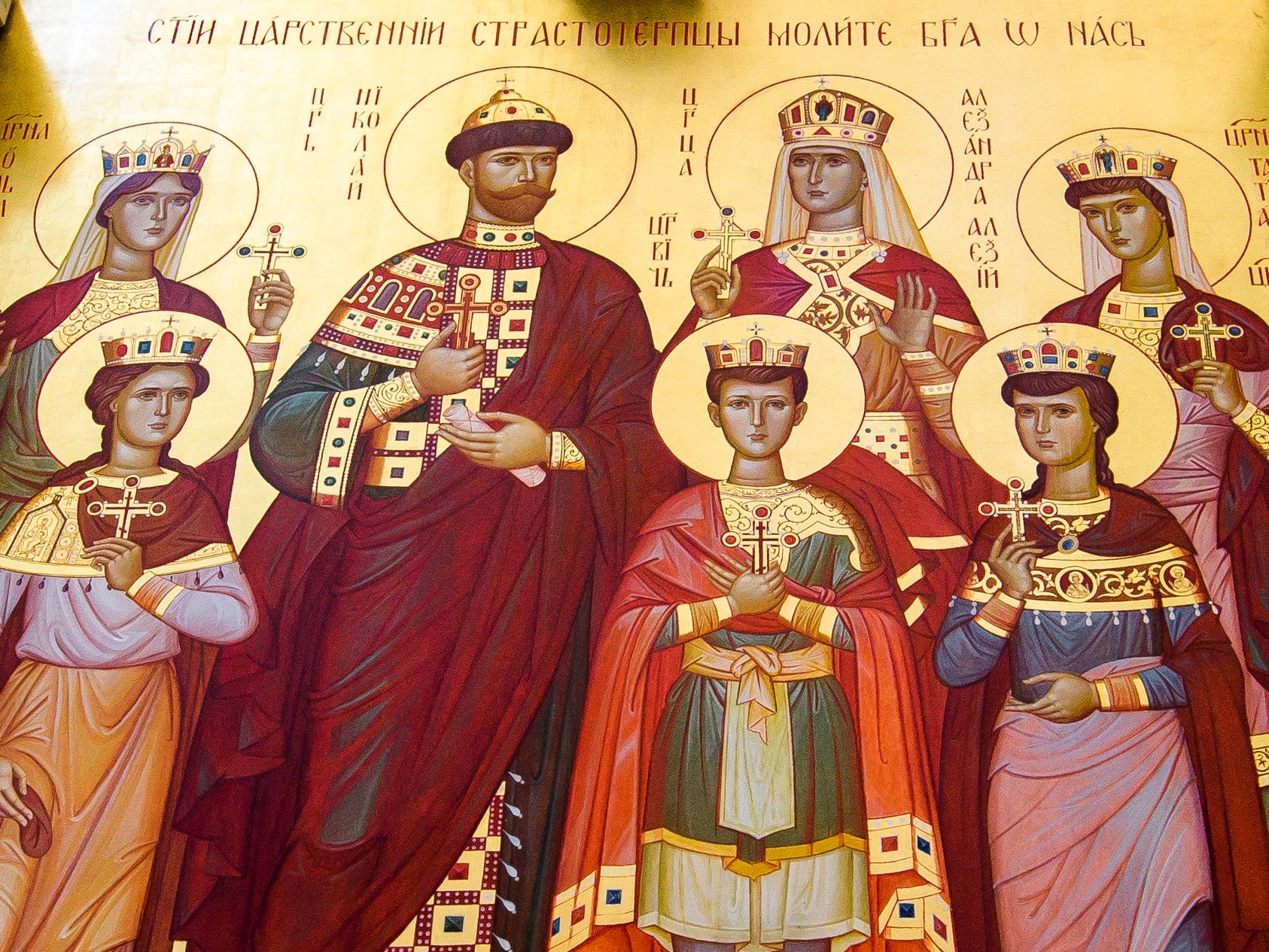
Today, Father Sergei is out of town and The Independent’s attempts to speak with the monastery’s management are given short shrift. He’s gone to visit his remote forest sketes, says a senior nun, who would not give her name. Nobody had been “blessed” to speak to us, she says nervously, and Father Sergei really didn’t like the media sniffing around. The nun, a rounded woman of about 40, scuttles off to the main temple.
Darkness has fallen, and the sharp bite of early Siberian winter is beginning to let itself be known. The sounds of bells and female voices repeating prayer mantras begin to echo across the territory. From time to time, black shadows emerge from the darkness, but they disappear just as quickly. We seem to have been transported back three centuries.
At half past six, perhaps a hundred black shadows appear from inside the temple. They scuttle across the ice at unfathomable speed, up the slope towards the monastery gates. Screams. Shrieks. Cries. Within a moment, the object of the nuns’ excitement becomes clear, as five Cossack soldiers emerge from the gates carrying a huge icon.
The nuns raise their arms and shriek some more, before following the men and muttering mantras as they make their way back towards the temple.
One inside, the new icon is raised at the altar, among the icons of Nicholas and his family. A woman hurls herself to the ground, and begins moaning, convulsing. Her cries grow. Others join in. The mantras become louder, more spine-tingling.
Cossack soldiers pass notes to the senior nun; there is money rolled up in them. Are they donations? Maybe. How can anybody understand what is going on?
It takes a while, but eventually, a frail nun called Mother Antonina, perhaps 60 years old, begins to speak. This was a magical place, she says: “One of the priests told us that he’d seen the tsar wandering in the grounds – for real, but don’t say I told you.”
We’d missed the main show, of course, the exorcisms. Every morning, while Father Sergei is in residence, they begin at six o’clock sharp.
Being the only monastery in the region offering such cleansing of the soul, people come here from all around, says Mother Antonina. They’ve come from Japan, India, Germany; there was one couple from Austria who since left for one of Father Sergei’s forest sketes. There have been many visitors from Ukraine. Yes, there was one nice chap called Alexander who came from the Berkut riot police. He came a few years ago.
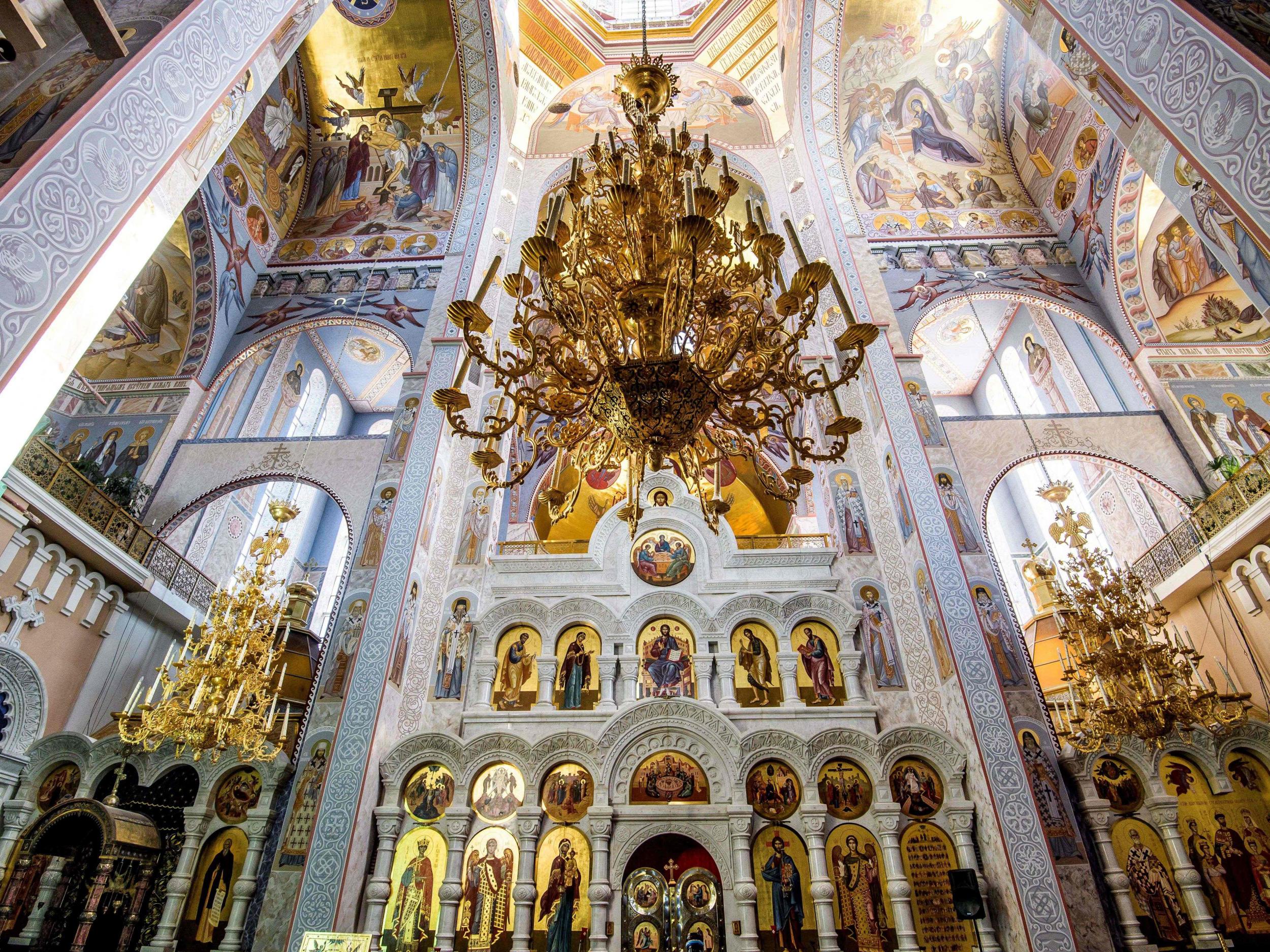
“My word, the Lord knows what happened to him,” she says. “First he was lying there, on a bench. Then he jumped from the bench at such a distance that he broke it – this is when Father Sergei cleansed him. The demon ran out of him, screaming and threatening him, shouting ‘I’ll show you, I’ll kick you’.”
Father Sergei seems to possess extraordinary powers over the nun, a presence that seeped deep into her professed opinions. At one point, Mother Antonina declares the Matilda film to be full of “powerful manipulations” that “make the 25th frame effect seem like yesterday’s technology”.
“How so?”
“Well… the viewer sees these images on the screen, and then they are projected… that’s what happens… roughly.”
“Sorry?”
“Perhaps you should speak to Father Sergei, he has the experts that come to visit him.”
With the priest away, Mother Antonina proposes we should speak to his wife. Could she call her? Not possible. There is only one mobile phone on the monastery and Mother Antonina is not “blessed” to use it. The nun leaves with a promise to search for someone we could talk to, but returns 20 minutes later with a worried face.
“I can’t speak with you,” she says. “I’m not blessed to speak to you.”
Part criminal, part shaman, part sect, the secretive edges of the tsar worshipper phenomenon would appear to ask many questions of both church and state. So far, both have seemed reluctant to act.
The head of the Russian Orthodox Church, Patriarch Kirill, while distancing himself from criticism of the Matilda film, failed to condemn the terrorist turn of the tsar worshippers in Yekaterinburg. Instead, he suggested the state should investigate “if a crime has been committed”.
Andrei Kurayev, a prominent and outspoken deacon of the Russian Orthodox Church, told The Independent that the Patriarch had an obligation to condemn such actions. “You aren’t attorneys, but priests,” he said. “You need to say if it is in line with the teachings of the Gospel or not.”

The Church seems no more ready to accept the weight of the Romanov burial fate. For historian Neuimin, its leaders are too “scared” to entertain a major climbdown. “If they recognise the remains, and hit at the heart of this movement, they will show themselves to be idiots,” he says.
Another complicating factor is the extent to which local business has been supporting the movement. Whether in the Ganina Yama complex, constructed so obviously on a historical untruth, or in support for Father Sergei’s activities in Sredneuralsk, or in the riches of the Temple on the Blood, or in any number of advertising boards declaring the “redemption” of the Romanovs that have been displayed around the city in recent years, it is clear that local businessmen have been a major pillar of support for the tsar worshippers.
What seems less clear is why they are doing it. Perhaps, here, the scale of the movement might offer clues. This year’s nocturnal pilgrimage to Ganina Yama was attended by no less than 25,000. The number of tsar worshippers is likely to be many times more.
Deacon Kurayev suggests that control might also be at the heart of the church’s thinking.
“The church is taking a cynical, manipulative stand,” he says. “The Patriarch wants to be the leader of all Russia’s angry people. He wants to keep them his own.”
Join our commenting forum
Join thought-provoking conversations, follow other Independent readers and see their replies
Comments